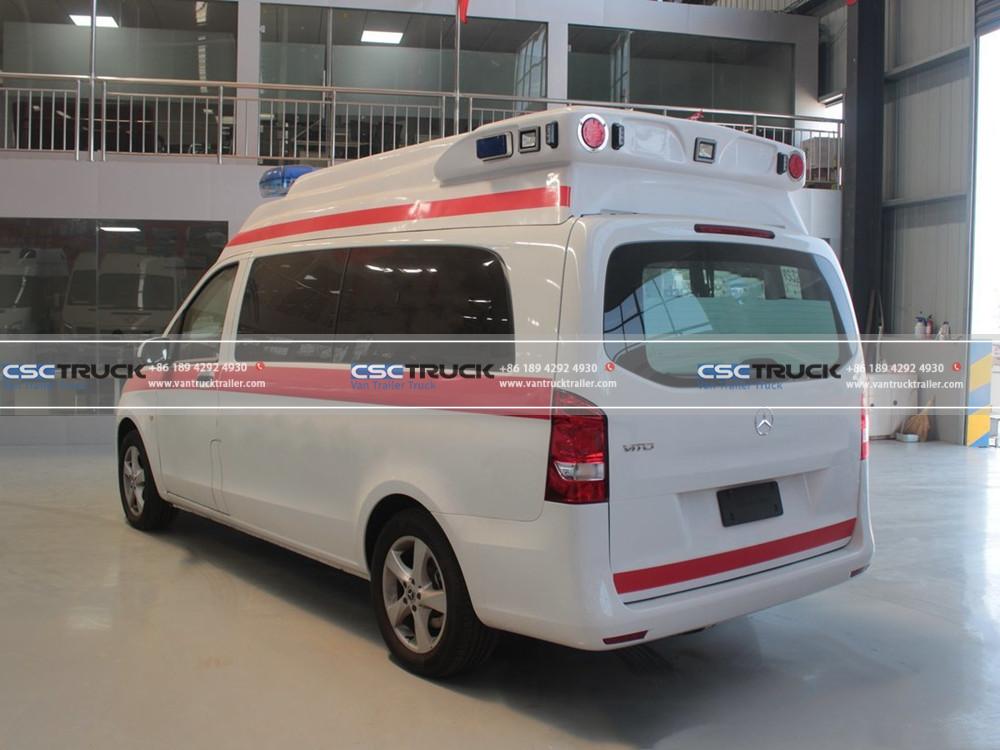In emergency medical services (EMS), every second counts. The ability to respond quickly, efficiently, and effectively can mean the difference between life and death. Van ambulances, with their specialized design and features, have become an essential tool in improving emergency response times and enhancing patient care. These vehicles are more than just a means of transportation; they are mobile treatment units equipped with life-saving technology that ensures that patients receive immediate care as soon as they are picked up. In this article, we will explore how van ambulances are revolutionizing the way emergency services operate, ultimately saving lives and improving patient outcomes.
1. The Importance of Quick Response: How Van Ambulances Speed Up Emergency Care
In emergency situations, speed is critical. The response time of an ambulance can be a determining factor in patient survival and recovery. Van ambulances are designed to maximize efficiency and minimize the time it takes to transport patients to medical facilities. The vehicle’s size and structure allow for quicker navigation through traffic, enabling EMS teams to reach their destinations faster.
One of the key reasons van ambulances improve response times is their compact size. Unlike larger, traditional ambulances, which can sometimes struggle to maneuver through congested urban areas, van ambulances are more agile. Their smaller footprint allows them to weave through traffic more easily, ensuring that they can reach the scene of an emergency quickly, even in crowded or tight urban environments.
Additionally, van ambulances are designed with advanced GPS systems and real-time traffic monitoring. These technologies enable EMS teams to choose the fastest route to their destination, avoiding delays caused by roadblocks, construction, or accidents. The combination of size, agility, and advanced navigation makes van ambulances a powerful tool for speeding up response times and ensuring that emergency care is delivered as quickly as possible.
2. Patient Care on the Move: How Van Ambulances Enhance Medical Treatment
Van ambulances are not just about getting patients to the hospital quickly; they are equipped with advanced medical equipment that allows for life-saving treatment to begin even before the patient arrives at the hospital. These vehicles are designed as mobile treatment units, offering a range of equipment and facilities that allow paramedics to provide immediate care during transit.
For example, van ambulances are often equipped with advanced life support systems (ALS), including defibrillators, ventilators, and advanced monitoring equipment that can track vital signs in real-time. These features ensure that patients receive the same level of care in transit as they would in an emergency room. Paramedics can perform critical interventions, such as administering medications, stabilizing fractures, or providing oxygen therapy, all while en route to the hospital.
The design of van ambulances also facilitates the comfort and safety of patients during transport. The interior layout is optimized to allow paramedics to easily access the patient while providing adequate space for medical procedures. The safety of the patient is ensured through specialized restraint systems that secure them in place during transport, minimizing movement and reducing the risk of injury.
3. Enhanced Accessibility: How Van Ambulances Improve Access to Medical Care
Another significant advantage of van ambulances is their ability to access a wider range of environments. Due to their smaller size and versatility, they can reach areas that larger emergency vehicles may not be able to access, such as narrow streets, rural areas, or crowded urban neighborhoods. This makes van ambulances particularly effective in ensuring that medical care is delivered to patients who might otherwise be difficult to reach with traditional emergency vehicles.
In urban environments, van ambulances can navigate through dense traffic and reach patients faster, while in rural or remote areas, they are better suited to navigate narrow, unpaved roads or areas with limited access. These capabilities make van ambulances invaluable in improving the coverage area of emergency medical services, ensuring that more people can receive prompt care when they need it the most.
Moreover, van ambulances are sometimes used in non-emergency situations such as transporting patients to follow-up appointments or transferring patients between medical facilities. This versatility helps alleviate pressure on traditional ambulances, ensuring that emergency vehicles are reserved for true emergencies while still maintaining high levels of service for routine medical transportation.
4. Equipped for Efficiency: The Role of Technology in Van Ambulances
Incorporating technology into van ambulances has revolutionized emergency medical services. Modern van ambulances are equipped with cutting-edge technology that improves both the speed and quality of care provided during transit. From real-time medical monitoring to telemedicine capabilities, technology ensures that EMS teams have the tools they need to provide high-quality care, no matter where the patient is located.
One key technological advancement is the use of telemedicine in van ambulances. Telemedicine allows paramedics to communicate with emergency room doctors remotely, providing real-time updates on the patient’s condition and receiving medical advice if needed. This capability allows for more accurate treatment decisions during transit, ensuring that the right interventions are made before the patient even arrives at the hospital.
Additionally, van ambulances are equipped with GPS systems that allow EMS teams to track their location in real time, providing better coordination with hospitals and ensuring the quickest route is taken. This real-time data is crucial for optimizing response times and ensuring that emergency medical teams arrive at their destination with the most accurate and up-to-date information.
5. Cost-Effective and Efficient: How Van Ambulances Maximize Resource Utilization
While van ambulances offer numerous benefits in terms of patient care and emergency response times, they also provide a cost-effective solution for emergency services. Compared to larger, more traditional ambulances, van ambulances are less expensive to operate and maintain. Their smaller size reduces fuel consumption, making them more economical in the long run, while their lower operating costs allow EMS services to allocate resources more efficiently.
Furthermore, because van ambulances are highly maneuverable, they can be used for a broader range of calls, from emergency medical response to routine patient transport. This flexibility allows EMS agencies to maximize the use of their fleet, ensuring that their resources are put to good use across various service needs.
In addition to being cost-effective, van ambulances can also help reduce congestion in urban areas by decreasing the number of larger vehicles on the road. With fewer vehicles needed to cover the same service area, cities can minimize traffic and reduce the environmental impact of emergency response operations.
Van ambulances are transforming the way emergency medical services deliver care. By enhancing response times, providing immediate medical treatment, and improving accessibility, these vehicles are ensuring that patients receive timely and effective care. Furthermore, the integration of advanced technologies and cost-effective operations allows for a more efficient and sustainable approach to EMS. Whether navigating crowded city streets or rural roads, van ambulances provide a vital service that supports better health outcomes and ultimately saves lives.

